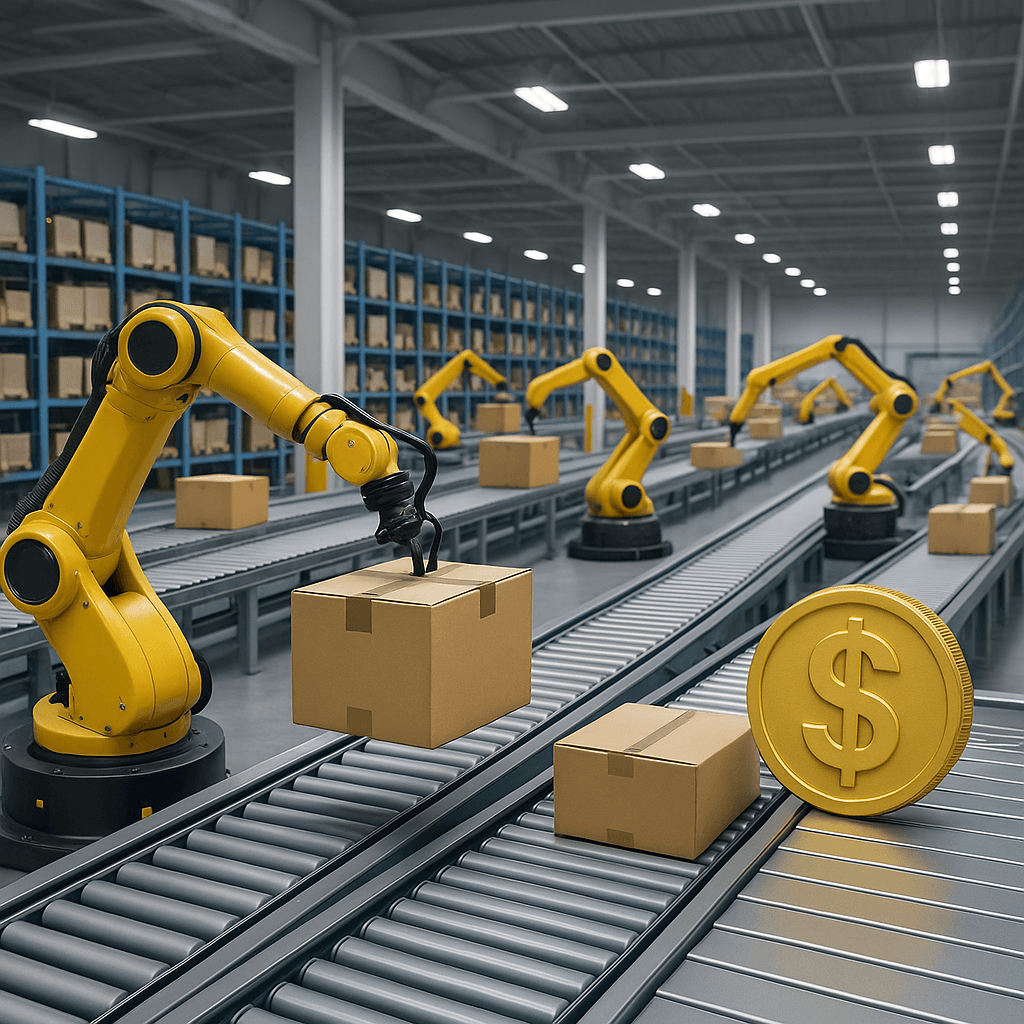Amazon's aggressive push into warehouse robotics could deliver up to $4 billion in annual savings, according to Morgan Stanley analysts who believe the market is vastly underestimating the e-commerce giant's AI-driven automation advances. The investment bank's bullish projection comes as Amazon continues replacing human workers with sophisticated robotic systems across its fulfillment network.
Amazon is quietly engineering one of the most dramatic workforce transformations in corporate history, and Wall Street is finally taking notice. Morgan Stanley analyst Brian Nowak dropped a bombshell projection this week, estimating that the company's shift from human workers to robotic systems could generate up to $4 billion in annual cost savings. 'The market is under-appreciating AMZN's GenAI advances in its Retail business with robotics-driven efficiencies,' Nowak told investors in a research note that's already reshaping how analysts view Amazon's long-term profitability. The timing couldn't be more significant. While competitors like Walmart and Target are still experimenting with automation pilots, Amazon has been systematically deploying advanced robotics across its massive fulfillment network. The company's latest generation of warehouse robots can handle complex picking and packing tasks that previously required human dexterity and decision-making. Industry insiders say Amazon's robotic workforce now numbers in the hundreds of thousands across its global operations. The $4 billion savings projection stems from reduced labor costs, improved efficiency, and decreased error rates. Human warehouse workers typically cost Amazon around $34,000 annually including benefits, while the company's most sophisticated robots require roughly $3,000 in annual maintenance and energy costs. But the real game-changer isn't just cost reduction - it's the speed and scalability these systems enable. Amazon's robotic fulfillment centers can process orders 40% faster than traditional facilities, according to internal metrics shared with supply chain partners. The company's AI-powered inventory management systems can predict demand patterns and pre-position products with unprecedented accuracy, further driving down operational costs. Morgan Stanley's analysis reveals that Amazon has been quietly investing billions in this transformation over the past three years. The company's robotics division, which includes acquisitions like Kiva Systems and investments in AI startups, now represents one of the largest industrial automation operations globally. What makes this particularly compelling for investors is the timing. While Amazon faced criticism for aggressive cost-cutting measures during the pandemic, the robotics investments are now paying dividends just as the company enters a new growth phase. The warehouse automation also positions Amazon advantageously against labor shortages that have plagued the logistics industry. However, the human impact can't be ignored. Amazon employs over 1.5 million people globally, with warehouse workers representing a significant portion of that workforce. The company has stated it will retrain displaced workers for higher-skilled positions, but labor advocates remain skeptical about the scale and effectiveness of these programs. The competitive implications are staggering. If Morgan Stanley's projections prove accurate, Amazon could reinvest those $4 billion savings into price competition, faster delivery options, or new market expansion - creating an even wider moat around its e-commerce dominance. Early indicators suggest this transformation is accelerating. Amazon recently announced plans to open 100 new robotic fulfillment centers over the next 18 months, representing the fastest expansion of automated facilities in the company's history.












